
© Paul B. Goode. (Click image for larger version)
Paul Taylor’s American Modern Dance
and Dayton Contemporary Dance Company
March 25: Spindrift, Sullivaniana, Mercuric Tidings
March 26: Rainbow ‘Round My Shoulder (Dayton), Dilly Dilly, Offenbach Overtures
March 27 mat: Snow White, Profiles, Rush Hour, Mercuric Tidings
★★★✰✰
New York, David H. Koch Theater
25, 26, 27 March 2016
ptamd.org
davidhkochtheater.com
Back to the Future
The past few years have seen the beginning of a transformation of the Paul Taylor Dance Company – or, rather, as it’s now known, of Paul Taylor’s American Modern Dance. The company is looking to the future, making a push to broaden its base. The goal seems to be to become something big and permanent, along the lines of New York City Ballet and Alvin Ailey. It can be difficult at times to wrap one’s head around this rebranding. As a choreographer, Taylor, despite his age and reputation, has always been his own man. His works, with the exception of the handful of universally-beloved pieces like Esplanade and Company B, can be quite quirky, even downright strange. 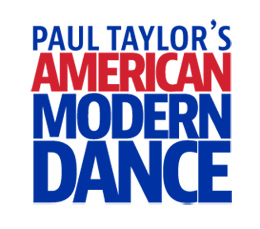 But if the company is to survive beyond Taylor, this broadening of scope is a necessary step.
But if the company is to survive beyond Taylor, this broadening of scope is a necessary step.
First came the move to the Koch Theater at Lincoln Center (from City Center). Big stage, heavyweight neighbors, large uptown audiences. And the gambit seems to have worked: the company’s three-week seasons are well-attended and the dancers look good on the expansive stage. Then, two years ago came the announcement that the troupe would gradually add works by other choreographers, past and present, to the repertory. And that it would present smaller dance companies side by side with its own dancers during the New York season. And finally the last piece of the puzzle: live music, at least in New York.
So how are things panning out? The live music is of course a vast improvement over the tinny recordings the company used at City Center. The Orchestra of St. Luke’s, under the baton of Donald York, doesn’t always sound as well-rehearsed as it could, but how many other modern-dance troupes can boast of having an orchestra at all?
The third element – the inclusion of outside choreographers – has had more mixed results. This year, two newly-commissioned pieces have been added to the mix, one by Doug Elkins and the other by Larry Keigwin. The company is also doing Martha Graham’s Diversion of Angels, and has invited the Dayton Contemporary Dance Company to perform Donald McKayle’s 1959 work Rainbow ‘Round my Shoulder. Whether one realizes it or not, the Taylor dancers have been conditioned by a very specific technique and aesthetic: athletic, rounded, heroic, grounded but also surprisingly balletic (particularly the extensive use of petit allegro, or small jumps and fast footwork). They’re not blank canvases onto which one can dab just any kind of movement.

© Paul B. Goode. (Click image for larger version)
This was particularly noticeable in Larry Keigwin’s new Rush Hour, which, like most of Keigwin’s dances, relies on a mixture of pedestrian movement – walking, running, swaying, falling – and motivic patterning. Phrases of falling overlap with phrases of walking, lifting with diving, and so forth. The movement is plain, but the Taylor dancers don’t really do things plainly; they apply momentum and muscularity in a way that looks a little forced here. They don’t just run, they run with one hip leading the way, and with their arms placed just so, creating a certain kind of tension in the shoulders. (This is augmented, in the case of the men, by their muscle-bound build.) They don’t look like people on the street, they look like Olympic athletes. But, I wonder whether, even if they looked more at home in Keigwin’s choreography, it would come across as a more interesting piece? Its constantly shifting floor patterns are clever enough – like complex math problems or a chess game – but, in the end, it feels as unrelentingly superficial as its neo-minimalist score, by Adam Crystal. Keigwin has done this kind of thing before, with more wit and ingenuity.

© Paul B. Goode. (Click image for larger version)
The piece’s flatness of tone stood in stark contrast with the fullness of McKayle’s Rainbow ‘Round My Shoulder, performed by Dayton Contemporary Dance Company. Though made in 1959, it felt not only more resonant, but more timely. In it, a group of men (almost all of them black), linked together as in a chain gang, move with weight and force to the pulse of work chants. (Destan Owens, Michael McElroy, and the Broadway Inspirational Voices, accompanied on the guitar by Gary Sieger, sang with great feeling.) The piece simmers with anger and pain, which find their physical expression in the bulging of muscles and the stomping of feet. Later, a woman appears, enticing, consoling, teasing the men. Then shots ring out, and two men fall to the ground. It’s a beautiful, spare work that doesn’t beat about the bush. It was danced with grace and grit by Dayton.
Back on the home front: Taylor has created two new pieces, as he does every year. One (Sullivaniana) is silly, the other (Dilly Dilly) elegiac. The two fall into familiar Taylor categories: the music-hall ballet and the slice of Americana. Sullivaniana is an inoffensive romp, set to three Arthur Sullivan overtures, from Iolanthe, Pirates of Penzance, and Patience. The conceit is that a series of performers in fancy Victorian outfits – dresses with bustles and padded peplums for the women and tails for the men, all in tartan – seek out the company of the other sex, until finally their frisky encounters multiply into an orgy. (Paul Taylor is partial to onstage orgies; there’s one in Orbs, and I’m sure there are others.) The dancing in Sullivaniana is pretty, full of swishing waltzes and flirty overhead lifts, but the goings on are not as funny as they are meant to be. The main attraction is the troupe’s newest member, Madelyn Ho, who dances with delicacy, precision, and wit.
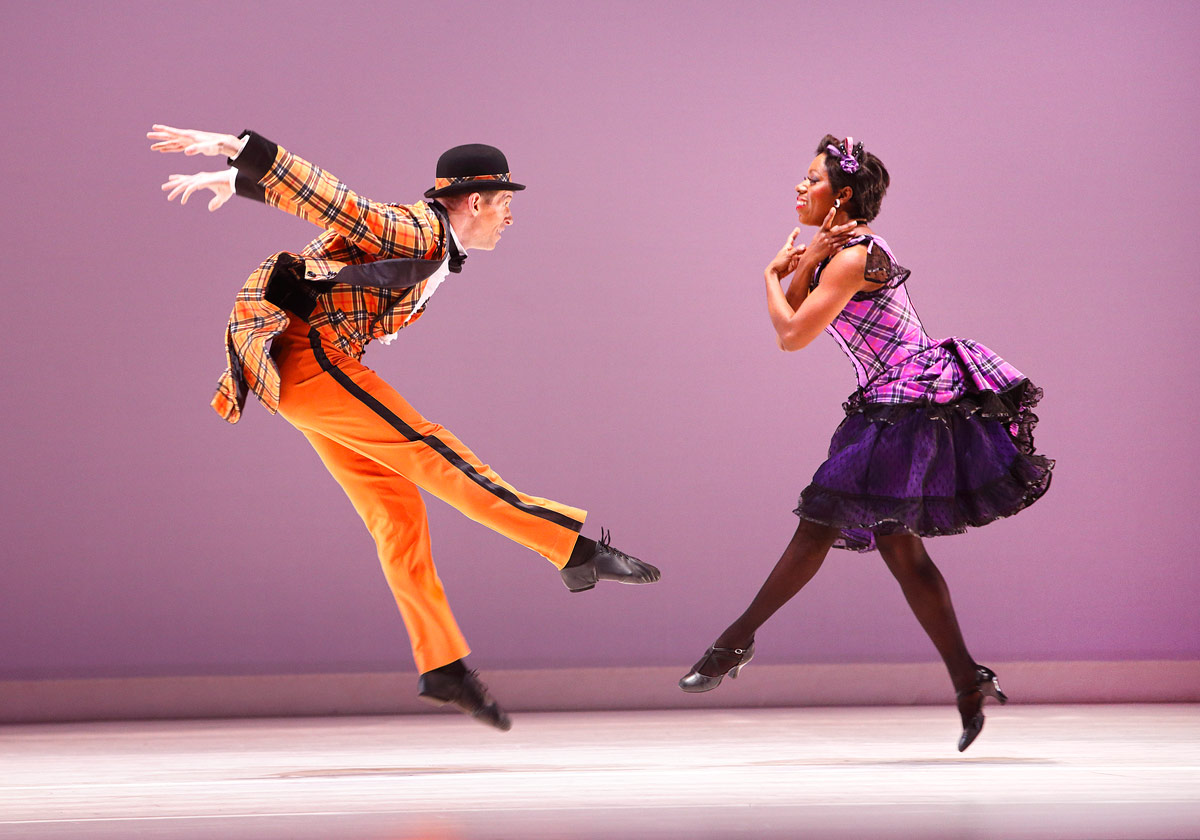
© Paul B. Goode. (Click image for larger version)
Dilly Dilly finds Taylor in a more wistful mood. Set to winsome folk songs like “Foggy Foggy Dew” and “The Big Rock Candy Mountain,” heard in recordings by the honey-voiced Burl Ives, it evokes a dopey, innocent America of leggy girls in cut-off shorts and aww-shucks cowboys, courting and falling in love, dying, praying, mourning. Each section contains a little fable, a play-by-play of the corresponding song lyrics. (In this, it’s similar to Taylor’s recent American Dreamer, set to Stephen Foster songs.) The dancers are underused – and they look it – but there’s something touching about Taylor’s attachment to this simple, folksy terrain. Perhaps he’s feeling nostalgic.
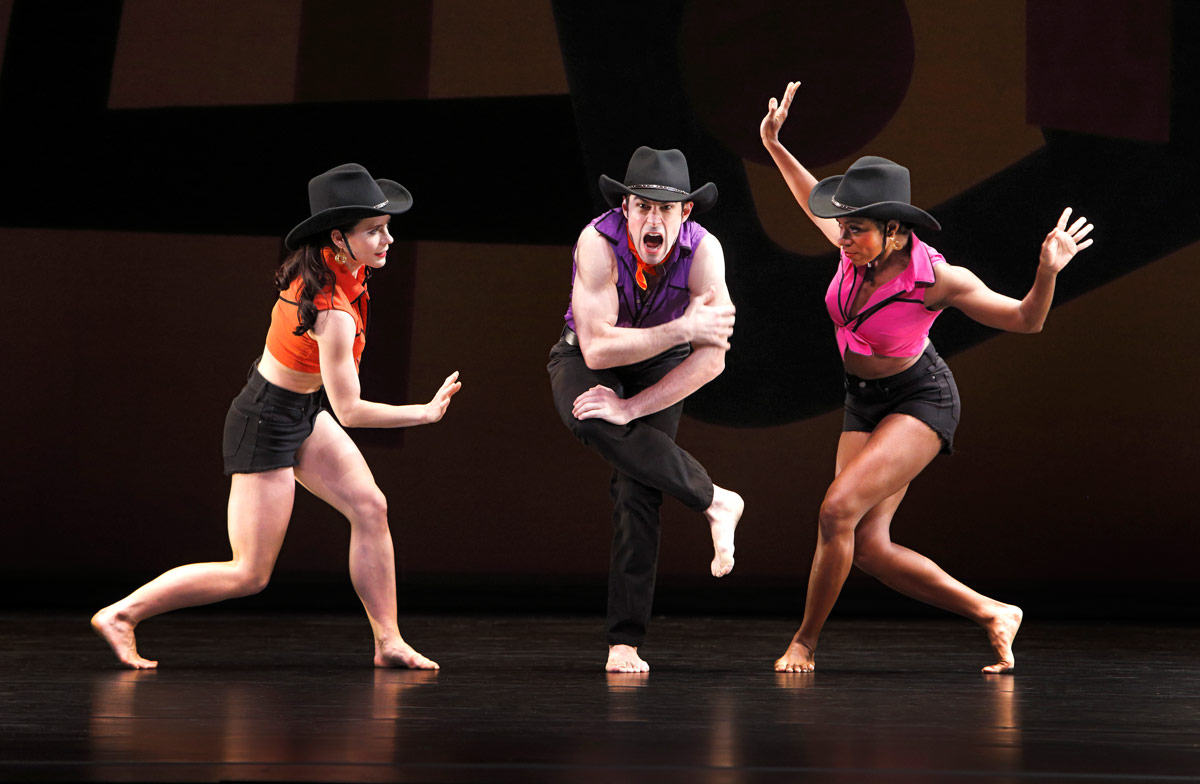
© Paul B. Goode. (Click image for larger version)
Then comes the rest of the vast Taylor rep, of which there is an awful lot. Taylor is nothing if not prolific. On Friday evening and at the Sunday matinée, the company performed the relentless and intricate Mercuric Tidings (1982), set to movements from Schubert’s first two symphonies. Here, finally, the dancers’ considerable stamina is tested – the super-fast footwork looked messy and rushed.
They’ve brought back the mysterious and disquieting Spindrift (from 1993), for the first time in several years. Like the more recent Beloved Renegade (2008) it is a meditation on life. A heroic, Apollonian man (Michael Trusnovec, of course) appears to look back on past loves and travails. (These include a pack of women who attack him like rabid bats.) This season they’re also performing the absurd but winning Offenbach Overtures, the climax of which is a duel between two outrageously mustachioed French officers – Mr. Trusnovec and Sean Mahoney, both appropriately over-the-top. They fight, make up, and finally, fall in love.

© Paul B. Goode. (Click image for larger version)
The flimsy Snow White (from 1983) is a slight but relatively effective spoof of Disney ingénues and of fairy tales in general. (Parisa Khobdeh did the honors.) It shared a program with the seldom-performed Profiles (1979), a preliminary sketch for Le Sacre du Printemps (The Rehearsal), made the following year. Four dancers move in “flattened” poses, very much in the style of the protagonist of Nijinsky’s Afternoon of a Faun, their hands curled into hoof-like shapes. In the dance’s final moment, the principal man (Trusnovec) and woman (Laura Halzack) finally uncurled their fingers – and the gesture felt momentous.
The dancers are appealing as ever. They throw themselves into the movement with abandon; they bend and twist and jump and spin about twice as much as any other dancers do. But they seem increasingly typecast. Why not spread the roles around a more? Why must Michael Trusnovec always dance the pure, noble god, alongside Laura Halzack, his placid and serene muse? Must Sean Mahoney always play the trickster, and Michael Novak the good boy? Heather McGinley, the girl next door? Eran Bugge the vixen? There’s a certain staleness to this formula; it’s bad for the dancers and bad for the repertory. Even if the company is starting to look ahead to its future, it’s too early to package these works as if they were historical artifacts, with no mysteries left to reveal.












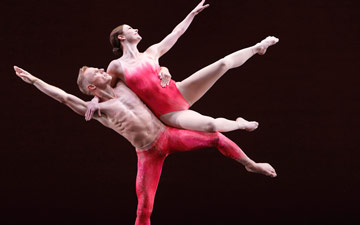
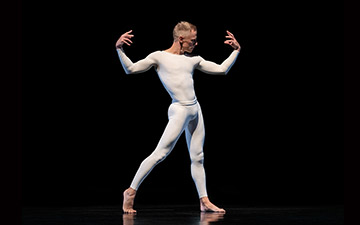


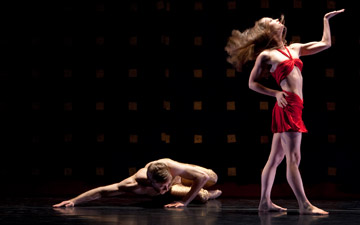
hi there. Really interesting last paragraph…interesting to me because I sat in the orchestra and could clearly recognize their faces and matching some names to the faces. Choreographers do get into a rut of using the easiest and most senior dancer as muse to work out the first solo or duet, particularly if the choreographer is of a certain age who cannot demonstrate everything and uses words, images, and whatever other means to get the movements he imagines. Tonight was very salient in the typecasting, both in Diversion of Angels, where the 2 short men were not included. The 4 men in Diversion was well matched in height, plus 4 women who were well match, the women in white was Halzark and the red I believe ravishingly looking Parsha, and the one in yellow could really jump. These 3 women look different and indeed are supposed to be different. The size and look casting however worked to good effect and make them look like a serious, professional company in Balanchine’s house, previously with thoroughbred.
The work which followed, RENEGADE by Taylor, began, as you pointed out, with Michael again as everyman or Taylor, graced by Halzak, and brought forth a chorus well matched in size. Then in the “scherzo” like section of the music, representing the kids per overlay of Whitman, the shorties, Chicano, China, African-American and Mutt all alike — dashed out and made their way across the stage and disappeared. Of course given the circumstances of the birth of Renegade Michael clearly is the beloved husband who died and Halzark the wife who commissioned the work. Serene as Halzark is, she does not have enough force and facility in her legs to be physically expansive in the last phrases, where the music truly overwhelmed the intended grand gestures..a pity since it is a successful work. This after I saw so many goofy works which are not so funny in this house. I think the silly works don’t work so well in the State theater. Or we might just have gotten so used to seeing Balanchine’s mostly grand works, and very few silly pieces. I might go up to Third Ring Friday to see what it is like from up there.
Repertory has its crazy way of having handlers — ballet masters, directors and choreographers, allowing things to go down a clear or easy path so that energies are spent on new works. One rehearsal director should not handle so many works, but even within a single choreographer company should take care of only 5 to 6 works of the same genre or type, and make sure they don’t all mush together. Choreographer is the worst rehearsal person because he is still looking at how to make the dance better by changing. A dancer with the gift of keeping a dance alive who has been in the first cast is the best bet, but like children one cannot have too many of them to do a thorough job of nurturing. I noticed that Michael T is beginning to rehearse dances. Lisa Viola on the other hand did not continue in any capacity, who would have been a very gifted person to remember steps from multiple works, probably because there were no funds to keep her.
Thank you for your comment. Yes, I think you’ve put your finger on the issue: huge repertoire, limited time and resources.